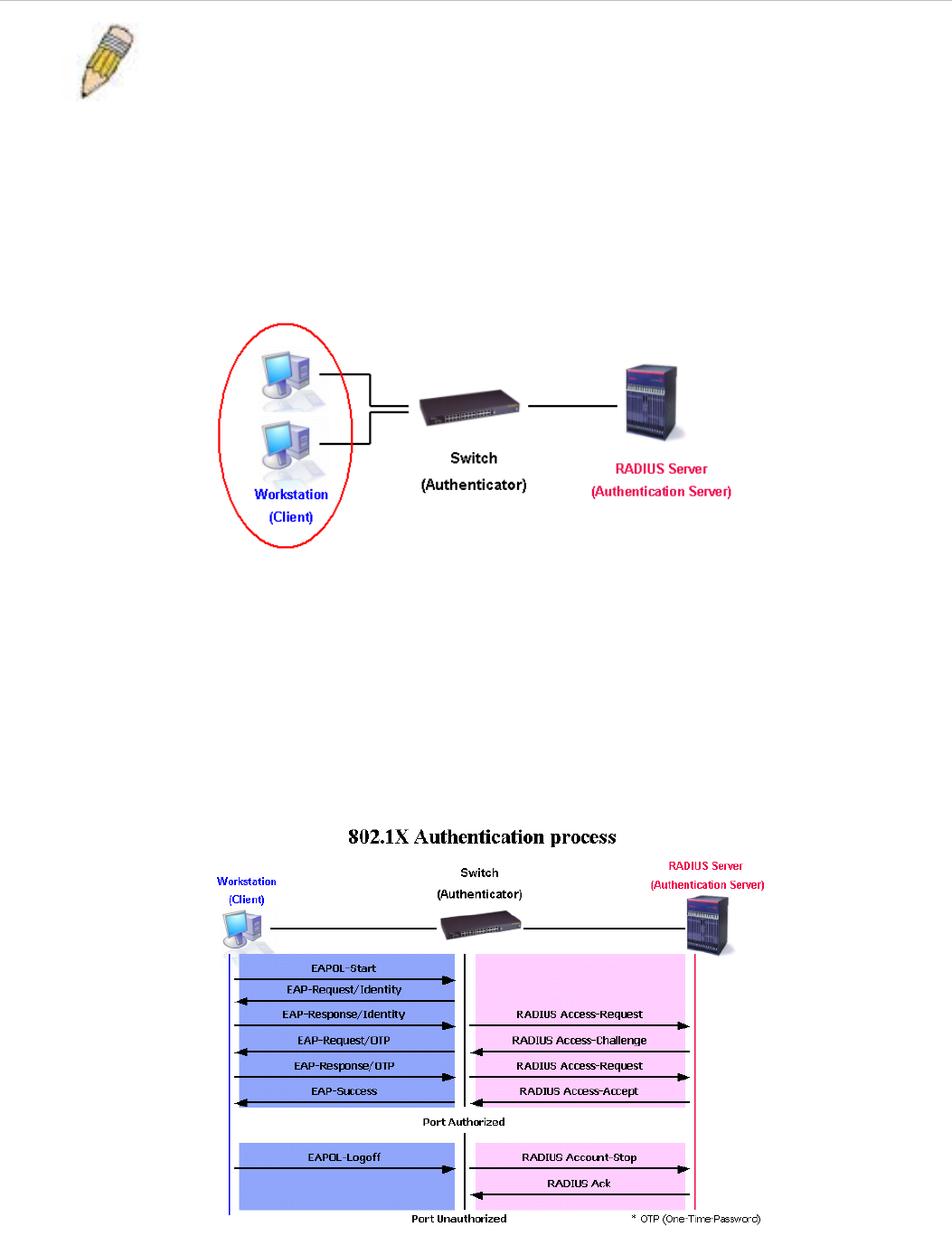
xStack
®
DES-3200-10/18/28/28F Layer 2 Ethernet Managed Switch User Manual
NOTE: When configuring the Authentication Protocol as local, the Switch has two roles:
Authenticator and Authentication Server.
Client
The Client is simply the endstation that wishes to gain access to the LAN or switch services. All endstations must be
running software that is compliant with the 802.1X protocol. For users running Windows XP, that software is included
within the operating system. All other users are required to attain 802.1X client software from an outside source. The
Client will request access to the LAN and or Switch through EAPOL packets and, in turn will respond to requests from
the Switch.
Figure 5 - 15. The Client
Authentication Process
Utilizing the three roles stated above, the 802.1X protocol provides a stable and secure way of authorizing and
authenticating users attempting to access the network. Only EAPOL traffic is allowed to pass through the specified
port before a successful authentication is made. This port is “locked” until the point when a Client with the correct
username and password (and MAC address if 802.1X is enabled by MAC address) is granted access and therefore
successfully “unlocks” the port. Once the port is unlocked, normal traffic is allowed to pass through the port. The
following figure displays a more detailed explanation of how the authentication process is completed between the
three roles stated above.
Figure 5 - 16. The 802.1X Authentication Process
The D-Link implementation of 802.1X allows network administrators to choose between two types of Access Control
used on the Switch, which are:
124


















